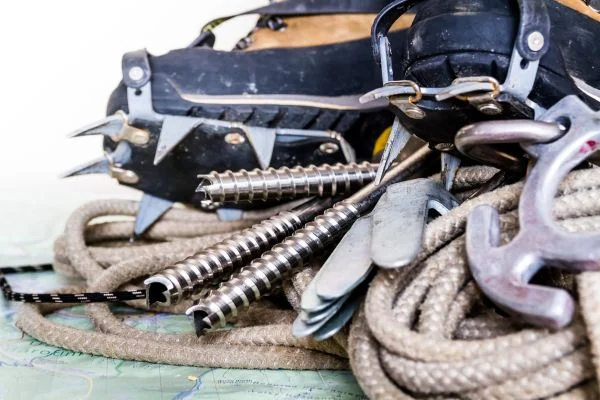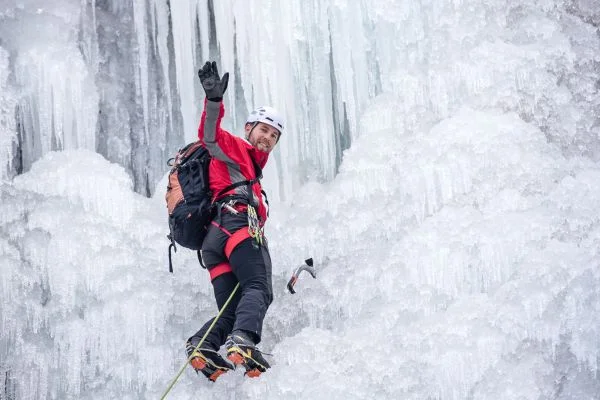If you’ve ever seen a photo of someone scaling a steep wall of ice, then chances are you’ve wondered if is ice climbing dangerous as it looks. The short answer is that, yes, ice climbing can be dangerous. But with the right gear and training, you can climb safely and enjoy this thrilling sport’s rewards.
Is Ice Climbing Dangerous | The Dangers
Ice climbing looks like an exciting, adrenaline-pumping activity. But as exciting as it looks, some very real risks are associated with this type of climbing. It’s important to understand these risks before attempting to climb ice so that you can make an informed decision about whether or not this activity is suitable for you.
Falling Objects and Avalanches
When ice climbing, it’s essential to be mindful of the possibility of falling objects (such as rocks or debris) and avalanches.
It’s also essential to ensure that your equipment is in good shape before use and that your harness and other protective gear are correctly fitted. Finally, ensure you research where you plan to climb—areas known for avalanches should be avoided if possible.
Temperature Considerations
Being out in cold weather can be dangerous. Make sure you have plenty of warm clothing on hand when ice climbing, and don’t stay out too long or push yourself too hard physically in cold weather conditions. Also, the temperature can vary significantly between different mountain parts, so it is wise to bring extra layers.
Safety Equipment
Always ensure that your safety equipment is up-to-date and properly functioning before engaging in any outdoor activity, particularly as dangerous as ice climbing.
For example, your helmet should fit properly and be free from cracks or other damage; your harness should fit snugly around your waist, and your crampons should have spikes that are sharp enough to provide adequate traction on the ice but not so sharp as to cause injury if stepped on by a fellow climber.
Also, if possible, try to climb with a partner with experience in ice climbing—this will help ensure your safety even further.
Also Read: How To Start Ice Climbing?
Safety Gear for Ice Climbing

Helmet
A helmet is essential for any climbing, especially ice climbing. Ice climbers must protect their heads from falling chunks of ice and potential head injuries caused by slipping or falling.
Therefore, choosing a helmet with good ventilation is essential so that your head stays cool while you climb. Additionally, some helmets come with built-in headlamps, which can be helpful when navigating through dark caves or crevices during your climb.
Crampons and Ice Axes
Crampons are metal spikes attached to boots that provide traction when walking on icy terrain. They come in various sizes and styles and can be used for mountaineering and ice climbing. Ice axes are tools for self-arresting (stopping yourself from falling) while ascending or descending a hard-packed snow or ice slope.
They also allow climbers to dig into the mountain’s surface for stability. Ensure you get crampons and an axe properly sized for your body type and skill level before taking on any climbing adventure.
Rope and Harness
The rope is essential for belaying (holding one end of a rope steady while another person climbs up). You will need two ropes—one for yourself and one for your partner—to ensure everyone has enough slack as they ascend or descend a route.
A harness ensures that you are securely attached to the rope, preventing potential falls during the climb. Ensure you get a harness that fits well so it won’t slip off mid-climb!
Also Read: How To Train For Ice Climbing?
Making Smart Decisions While Ice Climbing
In addition to having the proper safety gear, climbers need to use common sense when deciding whether or not an ice climb is within their abilities.
Often what looks like an easy climb from the ground can quickly become much more complicated once you’re out on the wall—so it pays to know your limits and make smart decisions about which routes are best suited for your experience level.
Also, always make sure that someone knows where you’ll be going in an emergency so that help can be sent if needed.
Also Read: What Do You Need For Ice Climbing?
Conclusion
Overall, is ice climbing dangerous? So, while inherent dangers are associated with any extreme sport, including ice climbing, careful preparation, and following safety guidelines can help reduce risk significantly.
By researching beforehand, taking necessary safety precautions, and making smart decisions throughout the climb itself – such as knowing your limits – climbers can minimize danger and maximize their enjoyment while out on the wall!

